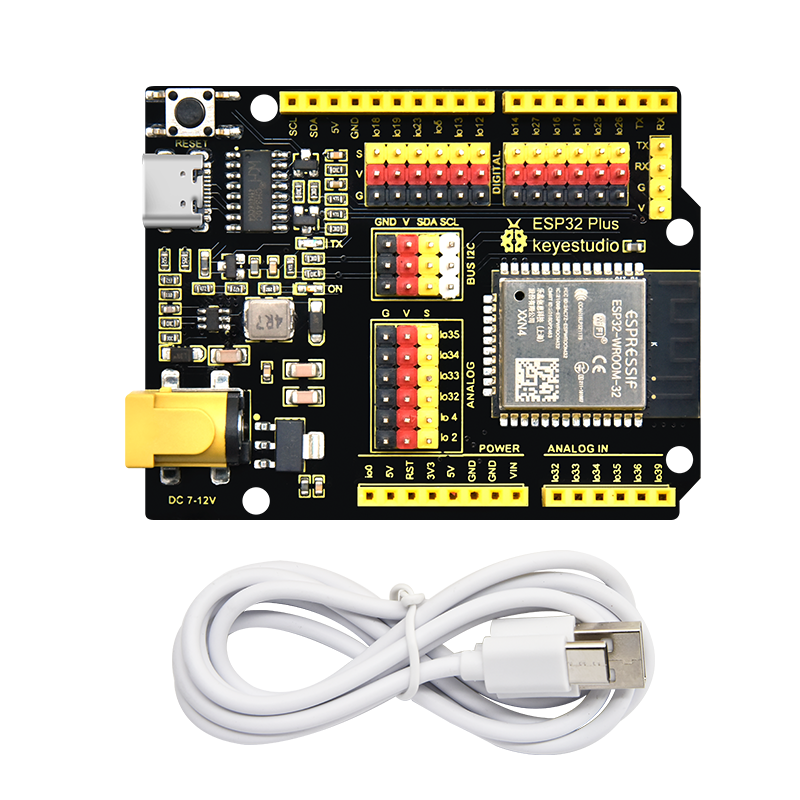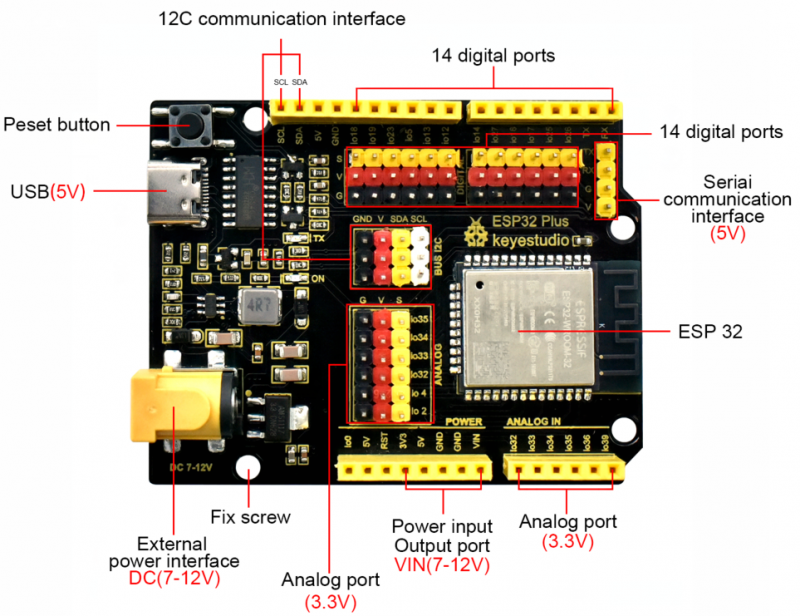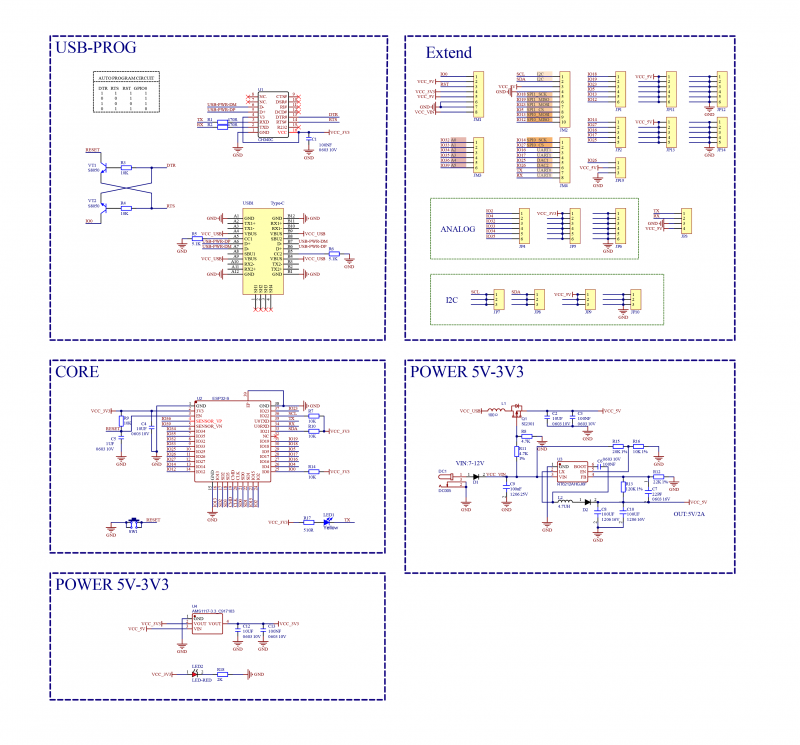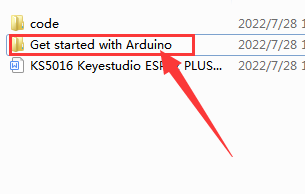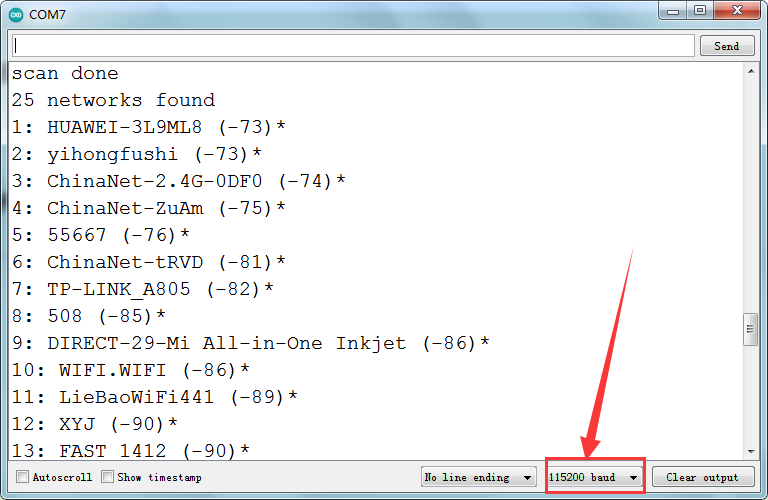KS5016 Keyestudio ESP32 PLUS Development Board: Difference between revisions
Jump to navigation
Jump to search
Keyestudio (talk | contribs) No edit summary |
Keyestudio (talk | contribs) No edit summary |
||
| Line 1: | Line 1: | ||
== Description == | == Description == | ||
<br>[[File:图片1-5016.png|800px|frameless|thumb]]<br> | |||
This is a universal WIFI plus Bluetooth development board based on ESP32, integrated with ESP32-WOROOM-32 module and compatible with Arduino. <br> | This is a universal WIFI plus Bluetooth development board based on ESP32, integrated with ESP32-WOROOM-32 module and compatible with Arduino. <br> | ||
| Line 6: | Line 7: | ||
== Specifications == | == Specifications == | ||
* Voltage: 3.3V-5V | * Voltage: 3.3V-5V | ||
| Line 19: | Line 19: | ||
== Pin out == | == Pin out == | ||
<br>[[File:图片2-5016.png|800px|frameless|thumb]]<br> | |||
== Schematic Diagram == | == Schematic Diagram == | ||
<br>[[File:图片3-5016.png|800px|frameless|thumb]]<br> | |||
If you are a beginner, please refer to the file Get Started with Arduino to install the ESP32 development board driver and Arduino IDE as well as the ESP32 development environment. | If you are a beginner, please refer to the file Get Started with Arduino to install the ESP32 development board driver and Arduino IDE as well as the ESP32 development environment. | ||
<br>[[File:图片4-5016.png|800px|frameless|thumb]]<br> | |||
| Line 86: | Line 83: | ||
After uploading the code, open the serial port and we can see the wifi found by ESP32. | After uploading the code, open the serial port and we can see the wifi found by ESP32. | ||
<br>[[File:图片5-5016.png|800px|frameless|thumb]]<br> | |||
Revision as of 11:08, 9 September 2022
Description
This is a universal WIFI plus Bluetooth development board based on ESP32, integrated with ESP32-WOROOM-32 module and compatible with Arduino.
It has a hall sensor, high-speed SDIO/SPI, UART, I2S as well as I2C. Furthermore, equipped with freeRTOS operating system, which is quite suitable for the Internet of things and smart home.
Specifications
- Voltage: 3.3V-5V
- Current Output: 1.2A(maximum)
- Maximum power Output: 10W
- Working temperature: -10℃~50℃
- Dimension: 69*54*14.5mm
- Weight: 25.5g
- Environmental protection attributes: ROHS
Pin out
Schematic Diagram
If you are a beginner, please refer to the file Get Started with Arduino to install the ESP32 development board driver and Arduino IDE as well as the ESP32 development environment.
Test Code
- include "WiFi.h"
void setup() {
Serial.begin(115200);
// Set WiFi to station mode and disconnect from an AP if it was previously connected WiFi.mode(WIFI_STA); WiFi.disconnect(); delay(100);
Serial.println("Setup done");
}
void loop() {
Serial.println("scan start");
// WiFi.scanNetworks will return the number of networks found
int n = WiFi.scanNetworks();
Serial.println("scan done");
if (n == 0) {
Serial.println("no networks found");
} else {
Serial.print(n);
Serial.println(" networks found");
for (int i = 0; i < n; ++i) {
// Print SSID and RSSI for each network found
Serial.print(i + 1);
Serial.print(": ");
Serial.print(WiFi.SSID(i));
Serial.print(" (");
Serial.print(WiFi.RSSI(i));
Serial.print(")");
Serial.println((WiFi.encryptionType(i) == WIFI_AUTH_OPEN)?" ":"*");
delay(10);
}
}
Serial.println("");
// Wait a bit before scanning again delay(5000);
After uploading the code, the ESP32 will find nearby WIFI and print the name and signal strength via the serial port each 5s.Test Result
After uploading the code, open the serial port and we can see the wifi found by ESP32.
